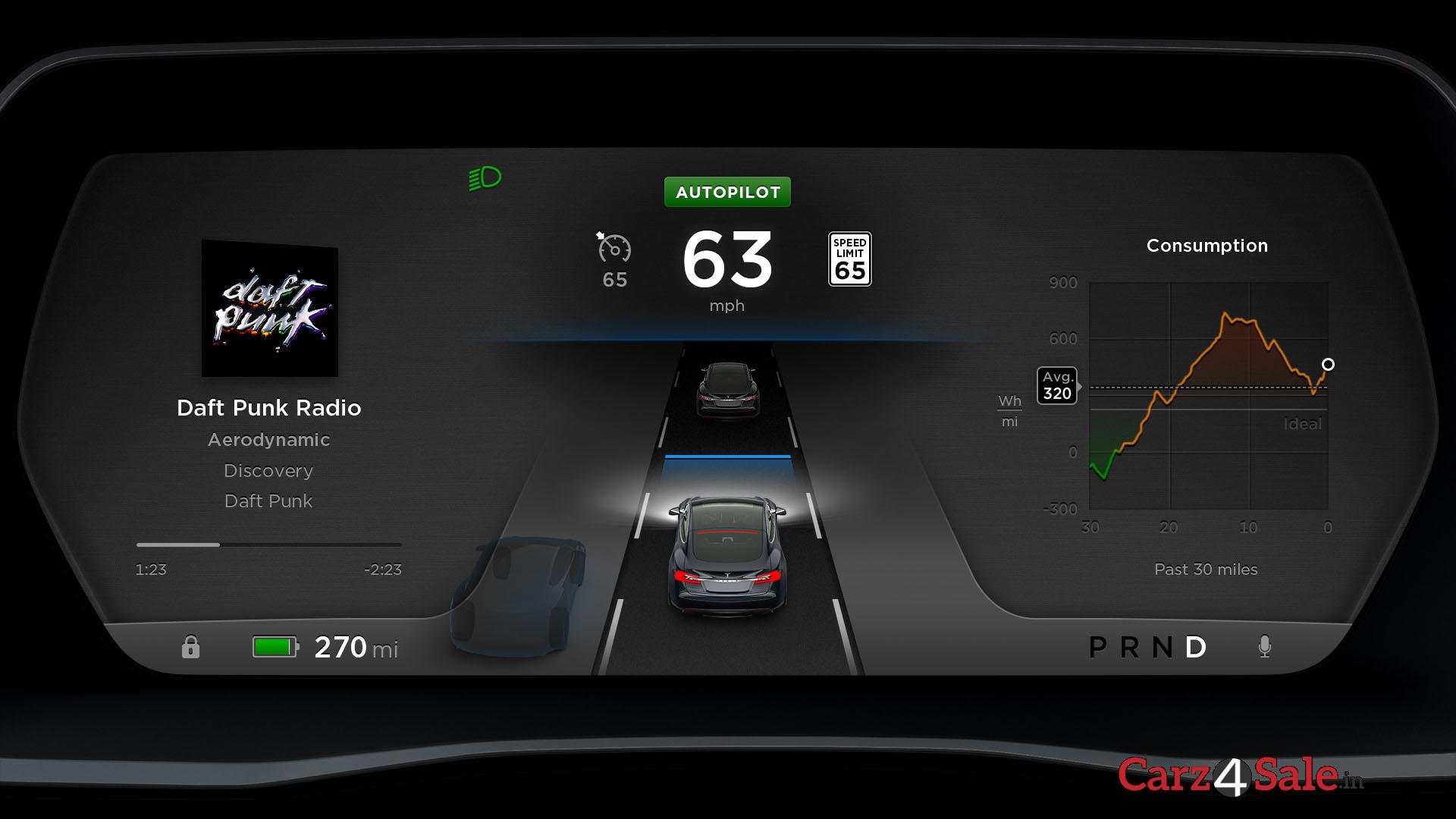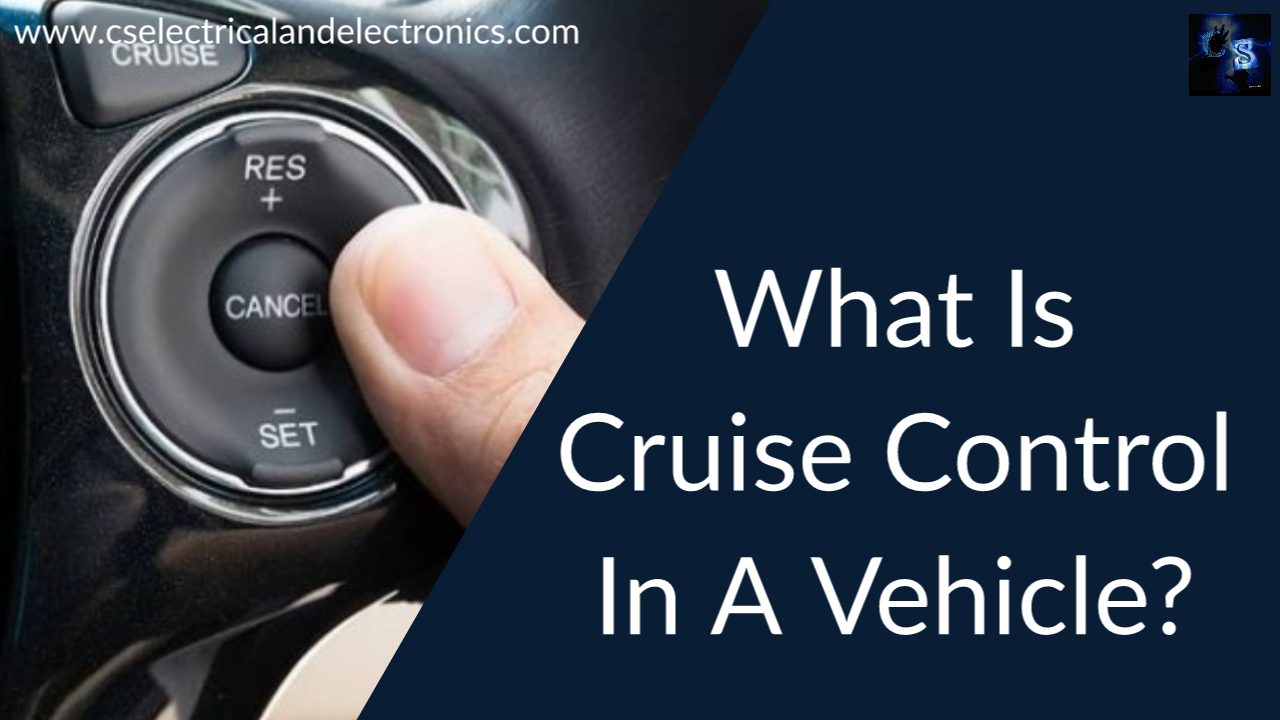Table Of Content

If the lead vehicle slows down, or if another object is detected, the system sends a signal to the engine or braking system to decelerate. Then, when the road is clear, the system will re-accelerate the vehicle back to the set speed. Cruise control, also known as speed control, is an electronic system that allows you to maintain a specific speed without manually controlling the accelerator pedal. The system uses sensors and electronic components to control the throttle and keep your car moving at a desired speed. First introduced in the late 1950s, cruise control has since become a standard feature in most modern vehicles you see on the road today. Adaptive cruise control (ACC) is like traditional cruise control, but smarter.
Tesla Cuts Prices on Vehicles, Full Self-Driving Software

Using forward-pointed sensors, cameras, or both, adaptive cruise control maintains your preset speed while constantly monitoring the vehicle in front of you. However, the kicker is, it automatically slows and accelerates to maintain a predetermined following distance. More sophisticated adaptive cruise control systems can bring your car to a full stop If necessary. Even more advanced systems will automatically get your vehicle moving again once the car ahead travels forward, though sometimes with the tap of the gas pedal.
How is adaptive cruise control different?
For example, you may refrain from driving the car at cruising speeds when it’s raining heavily. The low visibility and unpredictable road conditions make it unsafe to drive at such speeds. So, always be mindful of the weather condition and your surroundings before engaging the system.
Cruise Control Acceleration and Deceleration
Check your vehicle’s manual for fuse information and consider a professional inspection of the brake pedal switch and speed sensor. Cruise control is an electronic system that allows a vehicle to maintain a steady speed set by the driver. Cruise control is designed to be used on roadways without frequent stops. It’s ideal for use on highways and long stretches of road with minimal stops or turns.
Check your car’s controls
Picture it like a synchronized dance on the highway, where every car knows its place and keeps the right distance. Cruise control is an electronic device within your vehicle that controls the speed of your vehicle. It allows the driver to maintain a constant speed of 25 mph without holding their foot on the accelerator.
Browse Best Cars
However, adaptive cruise control may not work well in bad weather or protect you from sudden movements, so you will want to always keep your full attention on the road. A speed limiter will limit how fast the driver can accelerate behind the wheel. All modern vehicles contain a standard speed limiter capping speed between 120 mph and 180 mph depending to protect the vehicle’s engine and discourage reckless driving. However, an additional limiter can be added as an option in many European-made cars, as well as Tesla, Ford, and Nissan. Drivers are still required to keep their foot on the pedal to keep their vehicle in motion, but will not be able to accelerate past a predefined speed limit. The system uses radar sensors to calculate the speed and distance of the car ahead.
Do not attempt to set cruise control when you are traveling over the speed limit. However, it’s a tool designed to make the driver’s task easier and less stressful. On the other hand, neither conventional nor adaptive cruise control relieves the driver of the ultimate responsibility of safely driving the car. It’s up to the driver to maintain control over the car’s operation. When used appropriately, conventional and adaptive cruise control are safe.
Cruise Control and Road Etiquette
Early versions were mechanical, using a second throttle lever mounted to the steering wheel. Cruise control is a valuable feature that can enhance your driving experience by providing comfort, convenience, and fuel efficiency. Remember to use it safely and appropriately based on driving conditions, and always stay attentive while on the road. In the realm of modern vehicles, cruise control systems have evolved significantly, offering a range of functionalities tailored to enhance driving experience and safety. Initially, the system used a cable to control the accelerator (throttle valve).
Cruise control safety tips
Automotive Adaptive Cruise Control Market revenue to surpass USD 59 Billion by 2033, says Research Nester - GlobeNewswire
Automotive Adaptive Cruise Control Market revenue to surpass USD 59 Billion by 2033, says Research Nester.
Posted: Wed, 20 Sep 2023 07:00:00 GMT [source]
The throttle valve controls the power and speed of the engine by limiting how much air the engine takes in (see How Fuel Injection Systems Work for more details). But gradually, it is trickling down to not so expensive cars as well. Adaptive cruise control is a part of an advanced driver assistance system. Step 5 - If you wish to accelerate when the cruise control is engaged, you can press the ‘+’ button on the steering wheel to briefly engage the accelerator pedal. Step 2 - Once your car reaches the desired speed, activate cruise control.
Typically, you can operate the functions of the cruise control system on today’s new cars using buttons located on the steering wheel. They are usually placed for easy operation by one of the driver’s thumbs. For example, until recently, Mercedes-Benz put the operational controls for its cruise system on a separate stalk below the turn-signal stalk on the left-hand side of the steering column.
This is an AlertSome cars do not engage the cruise system below a certain speed, typically less than 40 km/h or 25 mph. Another inventor named Harold Exline, working independently of Riley, also invented a type of cruise control that he first installed on his car and friends' cars. Check out the below video from our sister site Autotrader that explains what you need to know about adaptive cruise control.
Mercedes-Benz and BMW offer systems that blend convenience, safety, and a step towards higher autonomy, maintaining a balance between automated and manual driving. For example, Audi's Traffic Jam Assist technology can be activated in tandem with its adaptive cruise control, thereby supporting the driver in conditions that aren't optimal for the latter. By means of ultrasonic sensors, radar, and a windshield camera, the vehicle will maintain a consistent distance from the one ahead in traffic while staying oriented on the road. The driver takes full manual controlwhen the congestion clears or Traffic Jam Assist otherwise becomes unsuitable for the situation.
Cruise control is a common feature, and adaptive cruise control is becoming increasingly widespread too. Adaptive cruise control, which monitors the ever-changing road ahead continuously via radar or laser, is potentially better equipped to handle congested roads. There's no definitive answer on whether that's the case, however, because this feature is very different from vehicle to vehicle. Cruise control systems, even adaptable cruise control, may not always detect these streets correctly, causing accidents.
With over 16 years of expertise, Andrei leads Driving-Tests.org, a top online resource for driver education. His leadership has established vital partnerships with over 2,600 libraries, educational bodies, and state agencies. As mentioned earlier, cruise control also has some cons, which are listed below.
The system constantly maintains the speed set by you (driver) irrespective of road conditions. For example, if there’s an incline ahead, cruise control adjusts the throttle accordingly to maintain the same speed. It automatically controls the car’s steady speed by taking the control of the throttle body.
However, as ACC systems evolved and improved, we became more accustomed to them. One potential downside to using cruise control is that it can result in the driver having a reduced reaction time when they must respond quickly to an unexpected situation on the road. Motorbiscuit reminds drivers that cruise control is not a hands-free driving feature. Distracted driving is a bad driving habit that can lead to crashes, so always stay alert.

No comments:
Post a Comment